TEMPE, Ariz. (AP) — Apparel manufacturer Fanatics has refiled its lawsuit against Arizona Cardinals rookie receiver Marvin Harrison Jr., adding his father, former NFL star Marvin Harrison Sr., and fraud allegations in addition to breach of contract.
The lawsuit was originally filed in New York Supreme Court this spring, claiming Harrison Jr. did not fulfill his obligations from a May 2023 deal he signed with the retailer and estimated the damage in “millions of dollars.”
The amended lawsuit — filed Friday in the same court — adds that Harrison Sr. “aided and abetted Harrison Jr.'s fraud on Fanatics.” The company says that sworn affidavits from both Harrisons on July 31 reveal it was actually Harrison Sr. who signed the contract with Fanatics, acting on behalf of the Harrison Collection.
“Harrison Sr. intentionally signed the Binding Terms Sheet in such a manner in order to lead Fanatics to reasonably believe that Harrison Jr. was the true signatory when in fact he was not," the suit states.
ESPN reported the deal was for at least $1 million for autographs, signed trading cards, game-worn apparel and other marketing opportunities.
Harrison Jr. was a star receiver at Ohio State when he signed the deal in 2023 and the Cardinals used the No. 4 overall pick to select him in the NFL draft. The receiver does not have an agent and has been represented by his father, Harrison Sr., who is a Hall of Famer after a 13-year career with the Indianapolis Colts.
AP NFL: https://apnews.com/hub/nfl

Arizona Cardinals wide receiver Marvin Harrison Jr makes a catch during a joint NFL football practice with the Indianapolis Colts, Thursday, Aug. 15, 2024, in Westfield, Ind. (AP Photo/Darron Cummings)
NEW YORK (AP) — Solar storms may bring faint but visible auroras to the Northern Hemisphere starting late Thursday and extending into early Friday morning.
But, experts say, don't expect power grids and communications to be disrupted much.
People in Canada and northern U.S. states including Alaska, Washington, Montana, North Dakota and Minnesota may be able to see faint colorful displays, according to the current space weather forecast.
If the moderate solar storms become more intense as nighttime approaches, people as far south as Illinois and New York might be able to glimpse the phenomenon.
“All the stars have to align” for that to happen, said Erica Grow Cei, spokesperson for the U.S. National Oceanic and Atmospheric Administration.
To spy the spectacle, wait for skies to get dark and then go outside, ideally away from bright city lights. Taking a picture with a smartphone camera may also reveal hints of the aurora that aren't visible to the naked eye.
The sun’s magnetic field is at the peak of its 11-year cycle, making storms and aurora displays more frequent. Unusually strong solar storms in May produced vibrant aurora displays across the Northern Hemisphere.
The night storms are expected to be less intense, but could cause brief disruptions to precision GPS machinery like what farmers use to harvest crops, Grow Cei said.
The Associated Press Health and Science Department receives support from the Howard Hughes Medical Institute’s Science and Educational Media Group. The AP is solely responsible for all content.
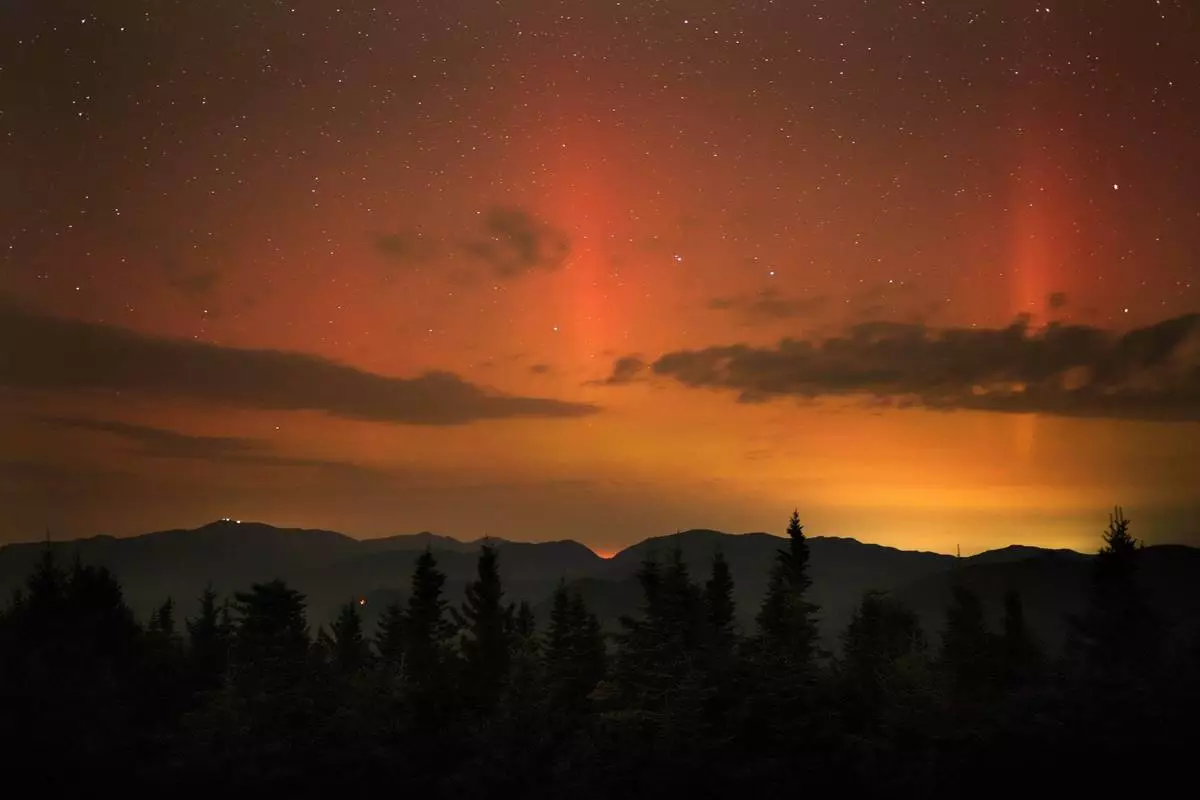
Flares of northern lights color the sky over the White Mountains just after midnight, Friday, Sept. 13, 2024, as viewed from a mountaintop in Chatham, N.H. Lights on the summit of Mount Washington can be seen on the ridgeline at left. (AP Photo/Robert F. Bukaty)
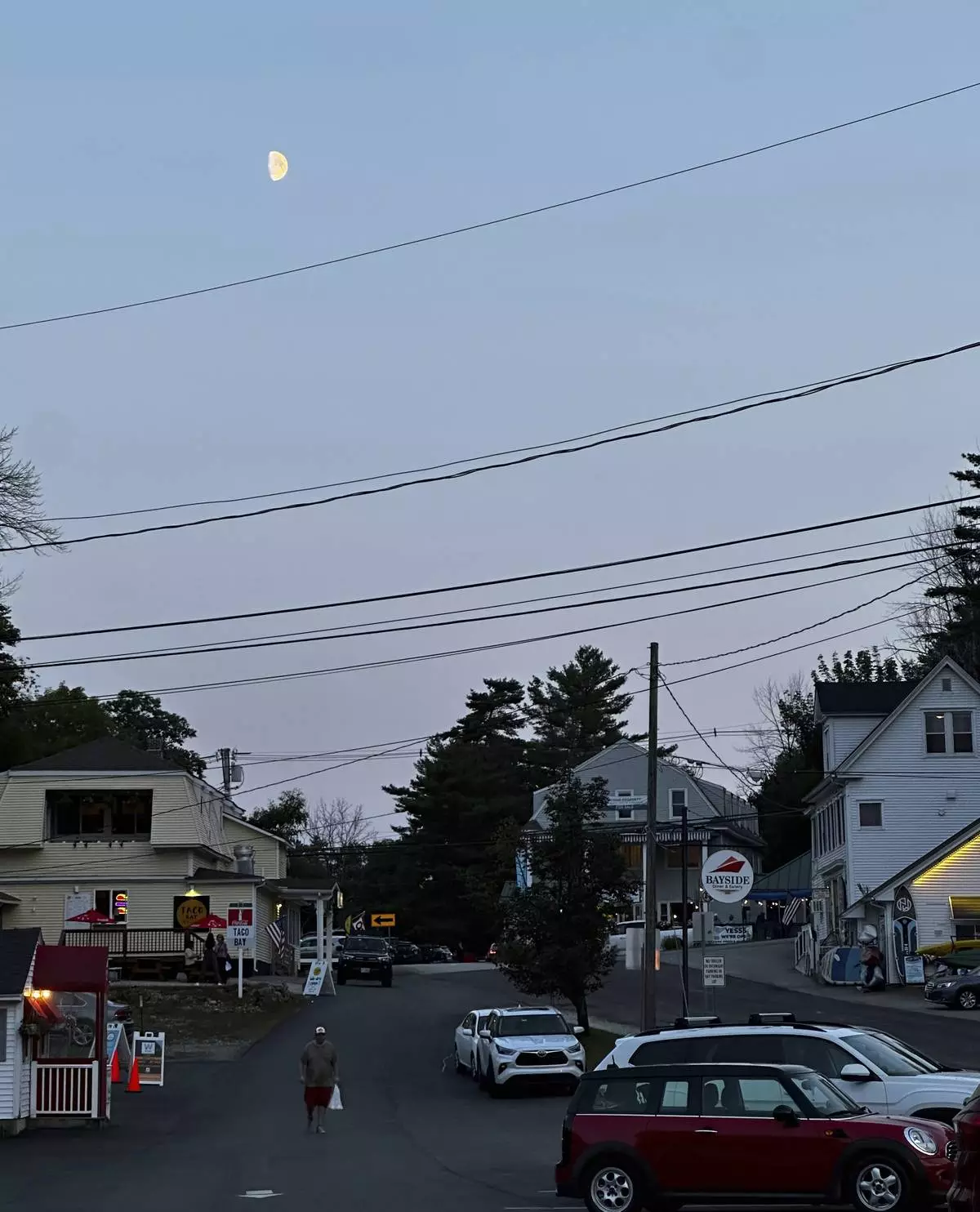
The moon rises over Alton, New Hampshire as Canada and northern U.S. cities experience moderate solar storms that could spark aurora borealis, Thursday, Sept. 12, 2024. (AP Photo/Caleb Jones)
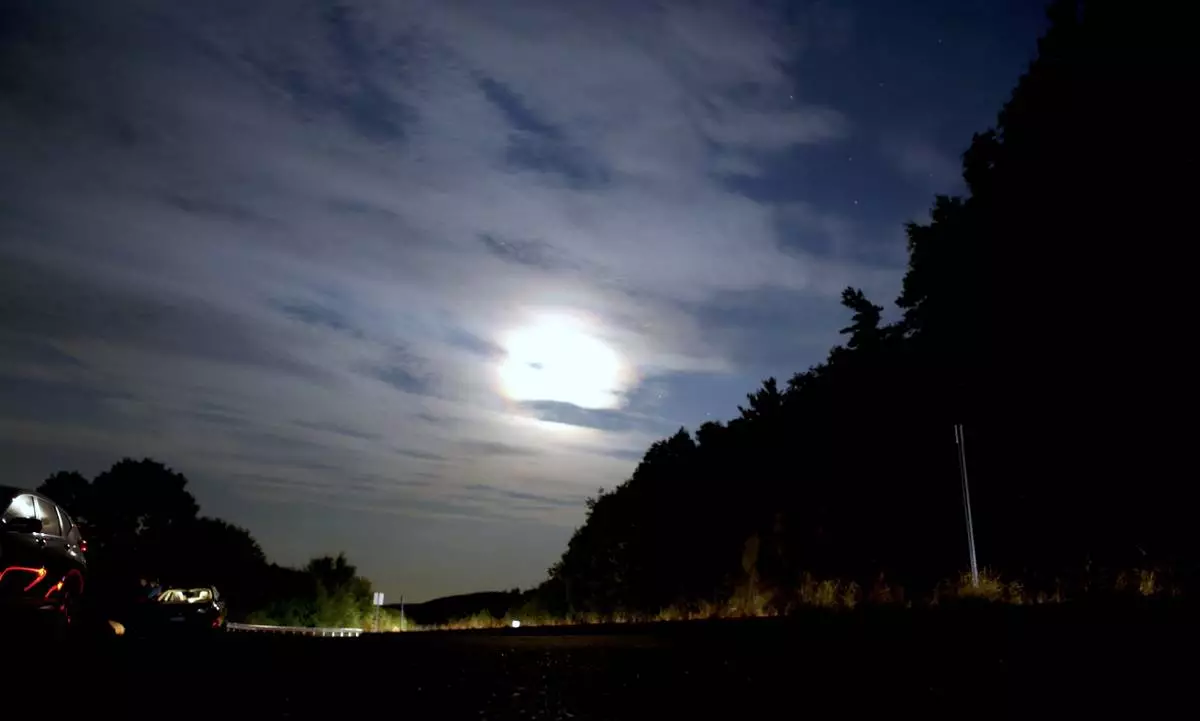
The moon shines over people parked at a scenic overlook to watch for aurora borealis in Alton Bay, New Hampshire as Canada and northern U.S. cities experience moderate solar storms, Thursday, Sept. 12, 2024. (AP Photo/Caleb Jones)
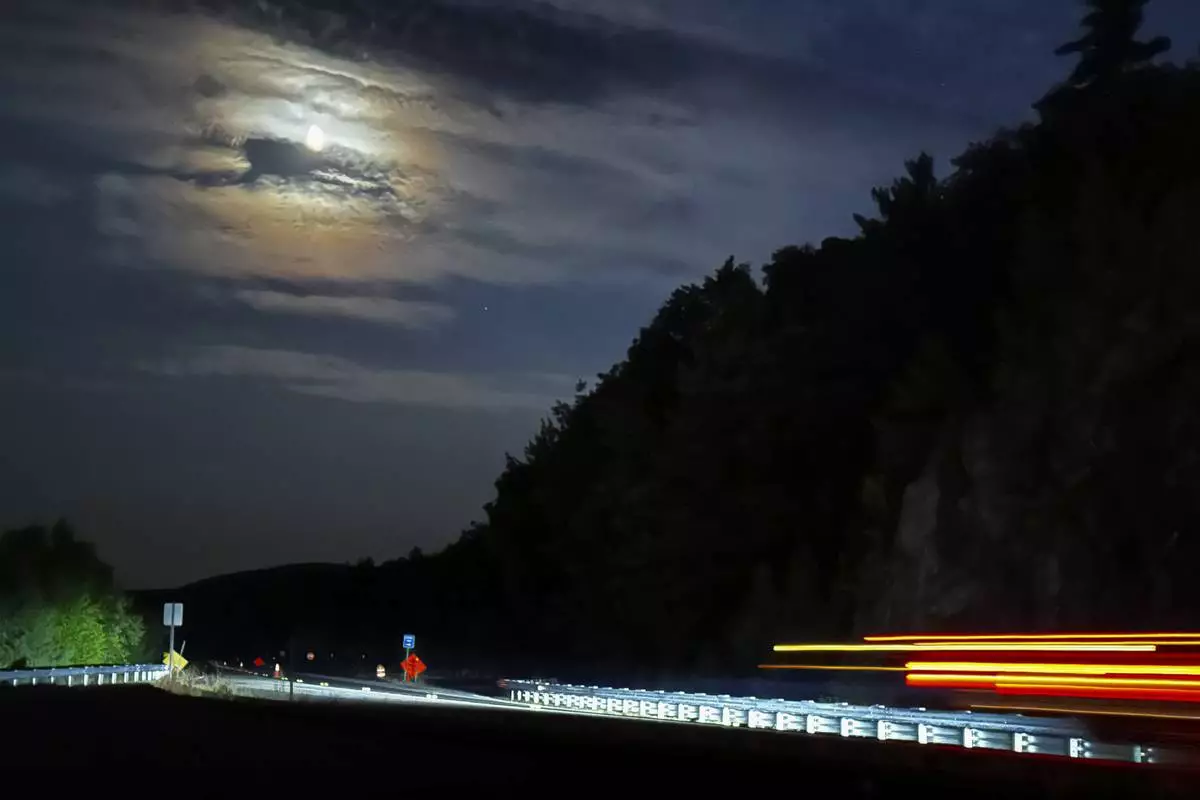
In this long exposure photo, a ring forms around the moon as cars drive along Mt. Major Highway near Lake Winnipesaukee in Alton Bay, N.H., Thursday, Sept. 12, 2024, as Canada and northern U.S. cities experience moderate solar storms. (AP Photo/Caleb Jones)
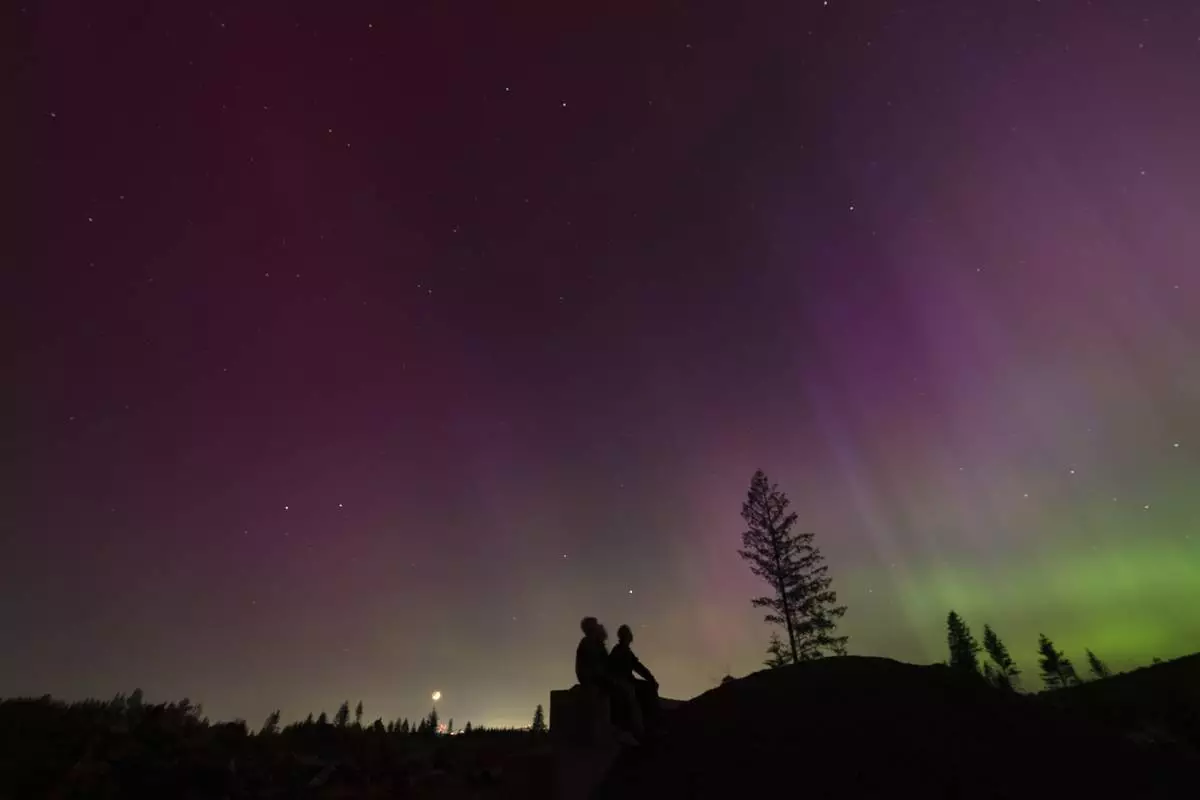
FILE - In this image taken with a long exposure, people look at the night sky towards the northern lights, or Aurora Borealis, May 10, 2024, in Estacada, Ore. (AP Photo/Jenny Kane, File)















